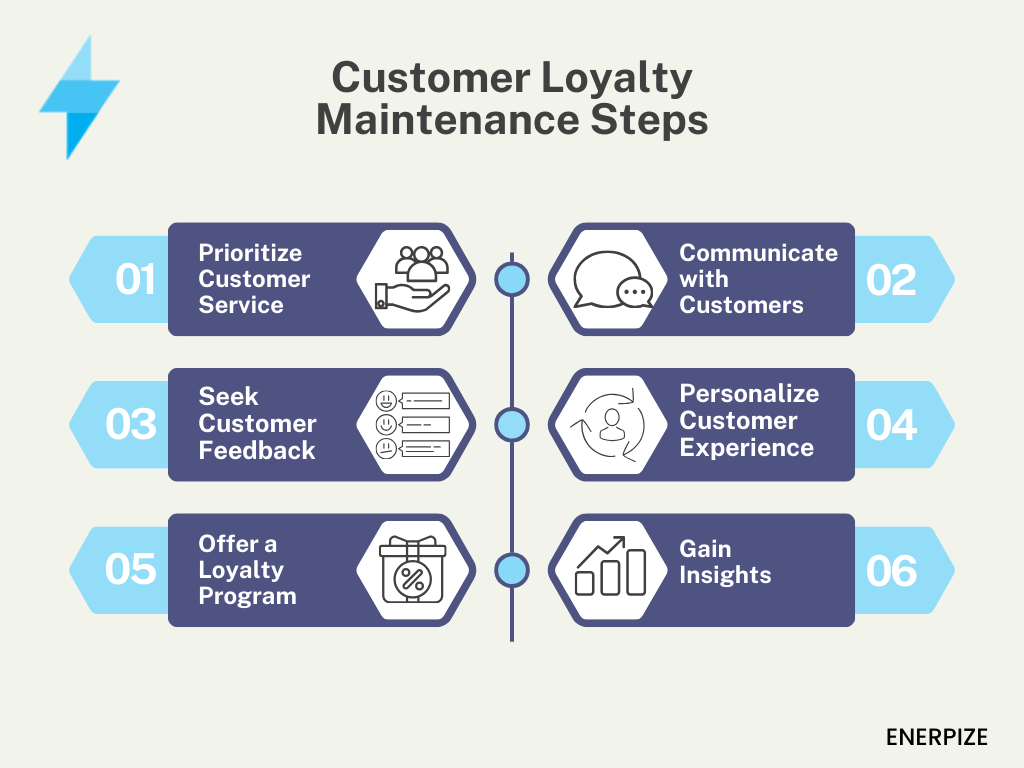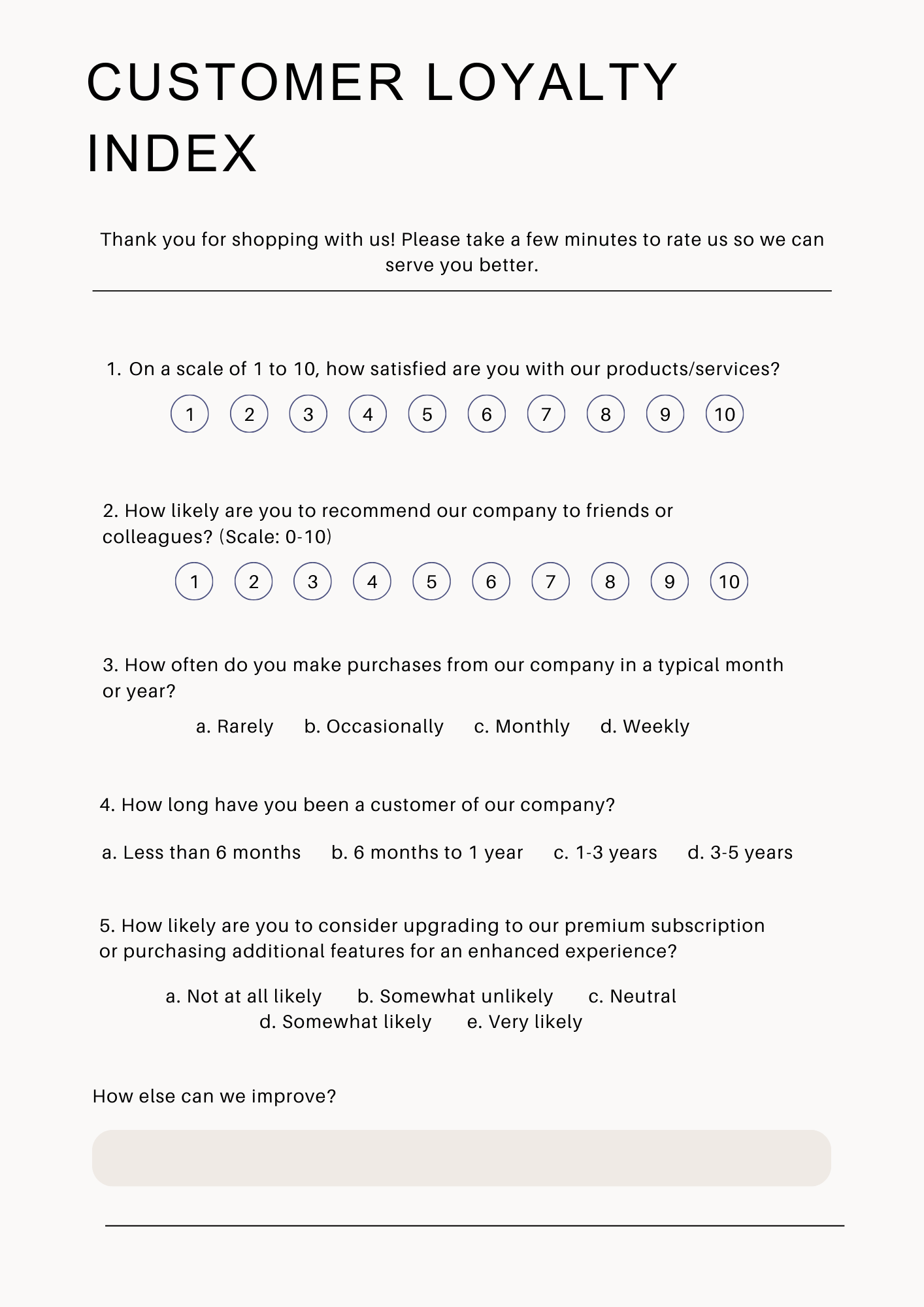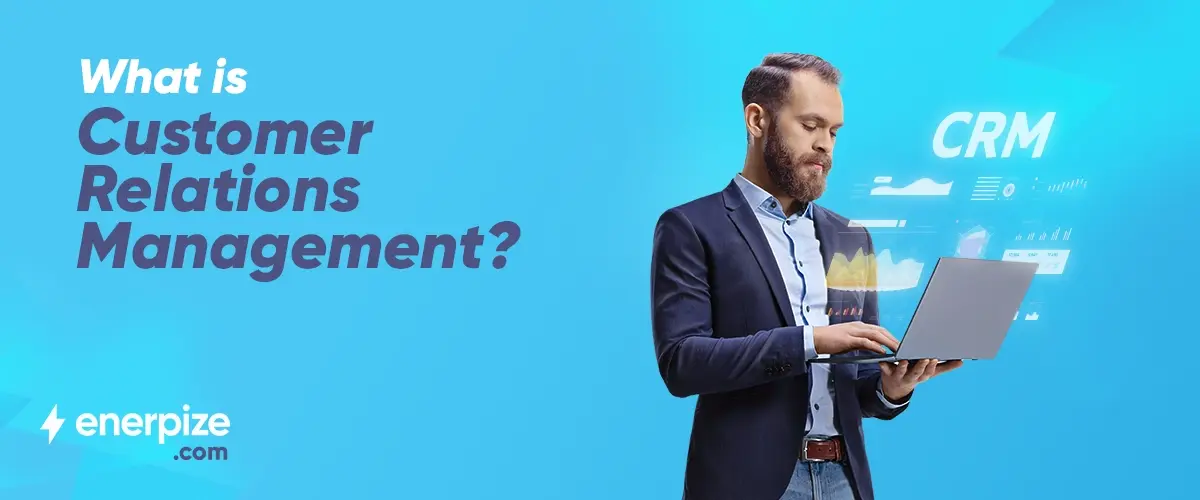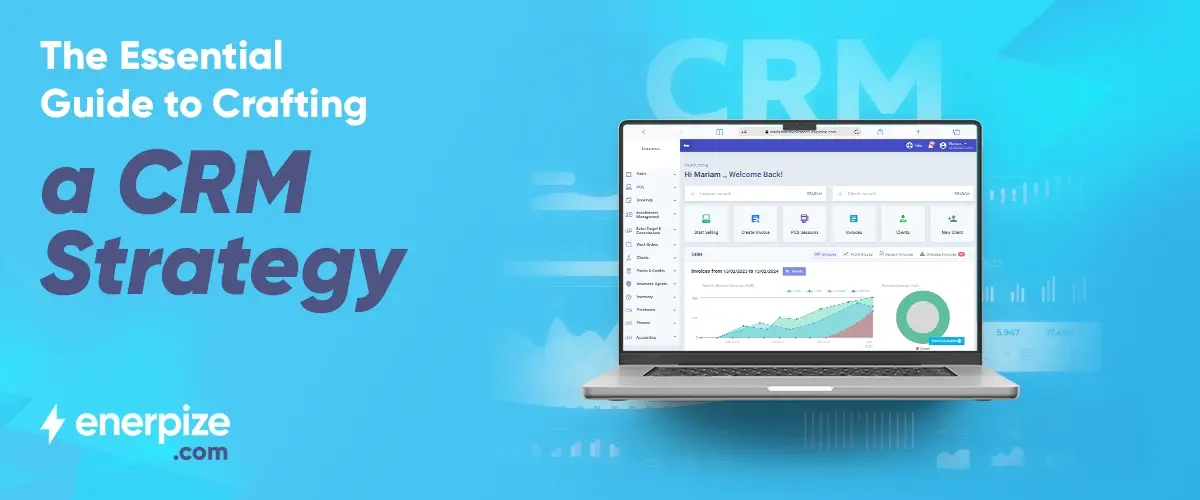Create and send online quotations and invoices, track sales, monitor staff performance, and sell & sync all your products via our POS and more.
Author : Haya Assem
Reviewed By : Enerpize Team
Customer Loyalty Index Formula: Comprehensive Guide

If you still think that customer loyalty is merely a program in which customers get extra points for completing a purchase that they can use in their next transaction, you should read this article.
Customer loyalty is the bond that exists between a company and its customers. It indicates how likely a customer is to make another purchase. Customer loyalty almost influences all business performance measures, because the entire business depends on a satisfied, happy, and loyal customer.
Customers are not all loyal for the same reasons; there are several sorts of loyal clients, each of which is dependent on a particular feature of the business. Measuring customer loyalty regularly increases customer retention since you'll always know what satisfies your customers and will help you establish strong brand advocates.
The customer loyalty index formula is one of the loyalty measurements that helps identify a business’s areas of strength and weakness and how effective are their efforts to retain customers. In this article, you'll find all you need to know about the customer loyalty index and other loyalty metrics, as well as why measuring customer loyalty is so important.
Key Takeaways
- Loyal customers, formed through consistent satisfaction, drive positive word-of-mouth marketing, essential for a company's long-term success. With benefits that include a strong brand reputation, cost-effectiveness, and market adaptability.
- Retaining customer loyalty involves prioritizing exceptional service, open communication, seeking feedback, personalized experiences, loyalty programs, and gaining insights through data analysis, ensuring long-term satisfaction and engagement.
- Measuring customer loyalty is crucial for assessing satisfaction, identifying strengths and weaknesses, guiding retention efforts, fostering brand advocacy, and maximizing Customer Lifetime Value, providing essential insights for business success.
- The Customer Loyalty Index (CLI) quantifies customer loyalty by considering factors like satisfaction, repeat purchases, retention, NPS, engagement, and upselling. It provides a numerical reflection of the customer relationship's health.
- Critical customer loyalty metrics include Retention Rate, CLV, NPS, Repeat Purchase Rate, Upselling Ratio, and CSAT. These indicators assess customer satisfaction, retention, and long-term value, aiding loyalty strategies.
What is customer loyalty?
Customer loyalty is a long-term positive relationship between a customer and a brand or company in which customers prefer to repeat their purchases and engagements with a brand over other competitors as a result of consistent satisfaction with a product's or service's quality, price, or other features.
Loyal customers are more likely to recommend a business to their friends, family, and colleagues. Positive word-of-mouth marketing is a strong and cost-effective strategy to acquire new customers and develop a positive brand reputation.
That is why loyal customers are essential for a company's long-term success and sustainability. The benefits extend beyond immediate revenue to positive brand reputation, cost-effectiveness, and flexibility in an unpredictable market.
6 Effective steps to maintain customer loyalty
It is not difficult to earn a customer's loyalty to your business, but the real challenge is keeping your customers loyal and satisfied over time. Promotions, competitive pricing, or effective marketing efforts may all contribute to initial customer loyalty.
However, maintaining this loyalty requires ongoing efforts to provide consistently high-quality products or services, as well as outstanding customer experiences. The six essential steps to retaining your customers' loyalty are outlined below:

Prioritize customer service
A business's first priority should be to provide exceptional customer service. This includes training your staff to address client requests, problems, and issues promptly and courteously. A positive customer service experience can leave a lasting impression and build trust, contributing to long-term customer loyalty.
Communicate with customers
Maintaining strong customer-business loyalty requires open and efficient communication. Update customers regularly with new products, services, or business changes. Respond to inquiries swiftly, be open about any issues, and show customers that their opinions matter.
Seek customer feedback
Seek feedback from customers actively to better understand their experiences and expectations. Surveys, reviews, and direct communication can all provide useful information about areas for development.
Use this feedback constructively to make necessary adjustments to your products, services, or processes, demonstrating a commitment to meeting customer needs.
Personalize customer experience
Personalizing interactions based on customer preferences and behaviors improves the overall customer experience. Employ data and technology to tailor marketing messages, offer items based on previous purchases, and recognize significant milestones in the customer's journey. Personalization shows customers that you value and understand their unique needs.
Offer a loyalty program
A loyalty program can encourage repeat business and improve customer retention. Customers should be rewarded for their loyalty with discounts, special deals, or points that can be used for future purchases.
A well-designed loyalty program provides value to the customer while also strengthening their emotional connection with your business.
Gain insights
Through data analytics, market research, and customer interactions, you'll be able to obtain insights about your customer behavior, preferences, and needs. Understanding the factors that influence their decisions allows you to adapt your strategies, improve your offerings, and stay ahead of market trends.
Why is measuring customer loyalty important in business?
Measuring customer loyalty is critical for various reasons, as it provides valuable insights into the state of a business and its relationship with its customers. Here are some of the main reasons why measuring customer loyalty is critical in business:
Indicates Customer Satisfaction
Customer loyalty is usually a reflection of customer satisfaction. Measuring loyalty allows businesses to determine how effectively they are meeting customer expectations and providing an exceptional experience.
Determines your strengths and weaknesses
Customer loyalty metrics indicate areas where a company thrives and places where it may need improvement. Businesses may improve their entire customer experience by identifying both their strengths and weaknesses.
Guides Customer Retention Efforts
Measuring loyalty helps businesses identify at-risk customers and implement targeted retention efforts. Proactive retention strategies can prevent customer churn and reinforce long-term relationships.
Builds Brand Advocacy
Loyal customers are more likely to become brand advocates, spreading the word about this business through referrals and positive reviews. Measuring loyalty allows businesses to identify and nurture these advocates, leveraging their influence to attract new customers.
Enhances Customer Lifetime Value (CLV)
Loyal customers generally have a higher CLV. Measuring customer loyalty helps businesses assess the long-term value of their customer relationships and develop strategies to maximize this value over time.
How to measure customer loyalty index formula?
The Customer Loyalty Index (CLI) is a statistic used by businesses to measure customer loyalty. It is a quantitative metric that helps businesses determine the possibility of their customers continuing to do business with them over time.
The CLI is frequently estimated based on a variety of features, including customer satisfaction, repeat purchase behavior, and the likelihood of recommending the business to others.
Some key components that are commonly considered when calculating the customer loyalty index are:
- Customer Satisfaction: a customer's level of satisfaction with a company's products, services, or overall customer experience.
- Repeat Purchase Behavior: How frequently customers make repeat purchases from the company.
- Customer Retention: A company's ability to retain its existing customers for an extended period.
- Net Promoter Score (NPS): The probability that customers will recommend the business to others.
- Customer Engagement: The level of interaction and engagement between the company and its customers.
- Upselling: Encourage customers to buy a higher-end version of a product or additional products than they had planned to buy.
To measure the CLI, companies may use a formula that combines these factors into a single numerical value. The specific formula can vary depending on the industry and business model. The goal is to have a metric that reflects the overall health of the customer relationship and predicts future customer behavior.
Customer loyalty index example:

6 Different Metrics for measuring customer loyalty
Measuring customer loyalty is crucial for businesses to understand how well they are retaining their customers and fostering long-term relationships. Several metrics can be used to gauge customer loyalty, and the choice of metrics may vary depending on the industry and business goals. Here are the most common 6 metrics for measuring customer loyalty:
Customer Retention Rate
This metric calculates the percentage of customers a business retains over a specific period. A high retention rate indicates that customers are staying with the company, which is a positive sign of loyalty.
Customer Lifetime Value (CLV)
CLV estimates the total revenue a business can expect to earn from a customer throughout their entire relationship. It helps assess the long-term value of a customer and can guide loyalty-building strategies.
Net Promoter Score (NPS)
NPS is a widely used metric that measures the likelihood of customers recommending a company's products or services to others. It is based on a simple question: "How likely is it that you would recommend our company to a friend or colleague?" Customers respond on a scale from 0 to 10, and they are categorized as promoters, passives, or detractors.
Repeat Purchase Rate
This metric focuses on the frequency of repeat purchases by customers. It measures how often customers come back to make additional purchases, indicating their loyalty to the brand.
Upselling Ratio
The upselling ratio assesses the effectiveness of upselling strategies and measures the proportion of customers who choose to upgrade to more expensive products or services. A higher upselling ratio suggests that customers are not only loyal but also open to exploring and investing in premium offerings.
Customer Satisfaction (CSAT)
CSAT measures the overall satisfaction of customers with a specific product, service, or interaction. It is usually measured by asking customers to rate their satisfaction on a scale, often ranging from 1 to 5 or 1 to 10.
CRM is easy with Enerpize.
Try our CRM module to manage your customer relations





